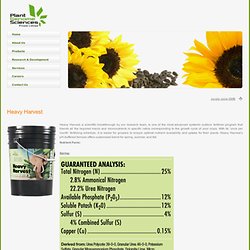Zoom
Trash

Multiponics™ New Tab. Google. Top 40 Useful Sites To Learn New Skills. The web is a powerful resource that can easily help you learn new skills.

You just have to know where to look. Sure, you can use Google, Yahoo, or Bing to search for sites where you can learn new skills , but I figured I’d save you some time. Here are the top 40 sites I have personally used over the last few years when I want to learn something new. Hack a Day - Hack a Day serves up fresh hacks (short tutorials) every day from around the web and one in-depth ‘How-To hack’ guide each week.eHow - eHow is an online community dedicated to providing visitors the ability to research, share, and discuss solutions and tips for completing day-to-day tasks and projects.Wired How-To Wiki - Collaborate with Wired editors and help them build their extensive library of projects, hacks, tricks and tips.
Aeroponic Supersonic. CANNABIS CULTURE - Aeroponics creates dense, compact and abundant buds that will amaze you Commercial Aeroflo operation.

Photo Jorge CervantesI first heard of aeroponics through a friend, who told me of military experiments in growing enormous tomato plants indoors, by means of aeroponics and cooled lights. When I learned that the roots just hang in the air and are misted by atomized water and nutrient particles, I thought "how unnatural.
" Then I saw a system set up: it was so clean and efficient! I saw that this was a very effective nutrient and oxygen delivery system. But is aeroponics really unnatural? The layout is important. You can grow aeroponically in tubes, buckets, or anything that is sealed and opaque.There are kits and contraptions you can buy, or with a bit of effort you can compose your own. The 4 Elements of Aeroponic Gardening. Technical reference page, article, data and results on growing with aeroponics. Startup Profile: AeroFarms - Urban Agriculture Aeroponic Systems.
March 29, 2011 | Robert Puro People are moving in ever increasing numbers from rural areas into urban city centers.

Global population is expected to increase by nearly 40% to 9 billion people in the next 40 years. Threats to agriculture from climate change, loss of arable land, pesticide resistance, and water shortages continue to grow more acute. As noted in our previous article “Urban and Agriculture Can Coexist,” cities and their attendant entrepreneurs will need to embrace urban agriculture in order to meet this future demand for food and ensure food security. Seedstock recently spoke with Ed Harwood, CEO of AeroFarms, whose company has created an aeroponic growing system (a controlled environmental agriculture system that grows produce without soil and without sun, all year round and in any location) with the potential to revolutionize and jumpstart the nascent urban agriculture movement and help to sustainably meet the food needs of a growing world. Aeroponic Systems. Essential Plant Nutrients.
Peter Motavalli, Thomas Marler, Frank Cruz and James McConnell College of Agriculture and Life Sciences University of Guam Nutrient Concentration and Function in Plants Plants require 13 mineral nutrient elements for growth. The elements that are required or necessary for plants to complete their life cycle are called essential plant nutrients. Each of these nutrients has a critical function in plants and are required in varying amounts in plant tissue (Table 1). Primary Nutrients : Heavy Harvest. Heavy Harvest, a scientific breakthrough by our research team, is one of the most advanced systemic outdoor fertilizer program that blends all the required macro and micronutrients in specific ratios corresponding to the growth cycle of your crops.

With its ‘once per month’ fertilizing schedule, it is easier for growers to ensure optimal nutrient availability and uptake for their plants. Heavy Harvest’s pH-buffered formula offers customized blend for spring, summer, and fall. Nutrient Facts: Spring: Summer Fall Stage: 3-4 week during the growing phase Direction to use: Apply at a rate of 454 – 908 grams per 3m x 3m garden area, smaller or larger amount may be required depending on size of plant and soil type. The Aeroponic Wall System. The Aeroponic Wall System (Updated Sunday, February 02, 2003 ) In the image above, you can see our first attempt at "Aeroponics.

" This hydroponic system feeds the crop by spraying a mist of nutrient solution directly onto the roots at a preset interval. The "Aerotubes" Darrin invented are sloped at a steep 1/2" per foot to allow the condensed nutrient to rapidly return to the supply tank, where it is reused. In the example above, we have three tubes in production, growing a few varieties of lettuces: Red Oak Leaf, Bronze Mignonette, and Butterking in the two upper tubes, and some varieties from a packet of "Mesclun Blend Salad Greens.
" Here's a close-up of some Oak Leaf from the Mesclun Blend seed packet. Withdrawing the net pot reveals the root system as it begins to develop inside the Aerotube... After six weeks in the Aerotube aeroponic system, Bronze Mignonette looks like this when withdrawn for harvest! As hydroponics go, aeroponics is one of the more mechanically dependant methods. Aeroponic growing systems for greenhouses and indoors.